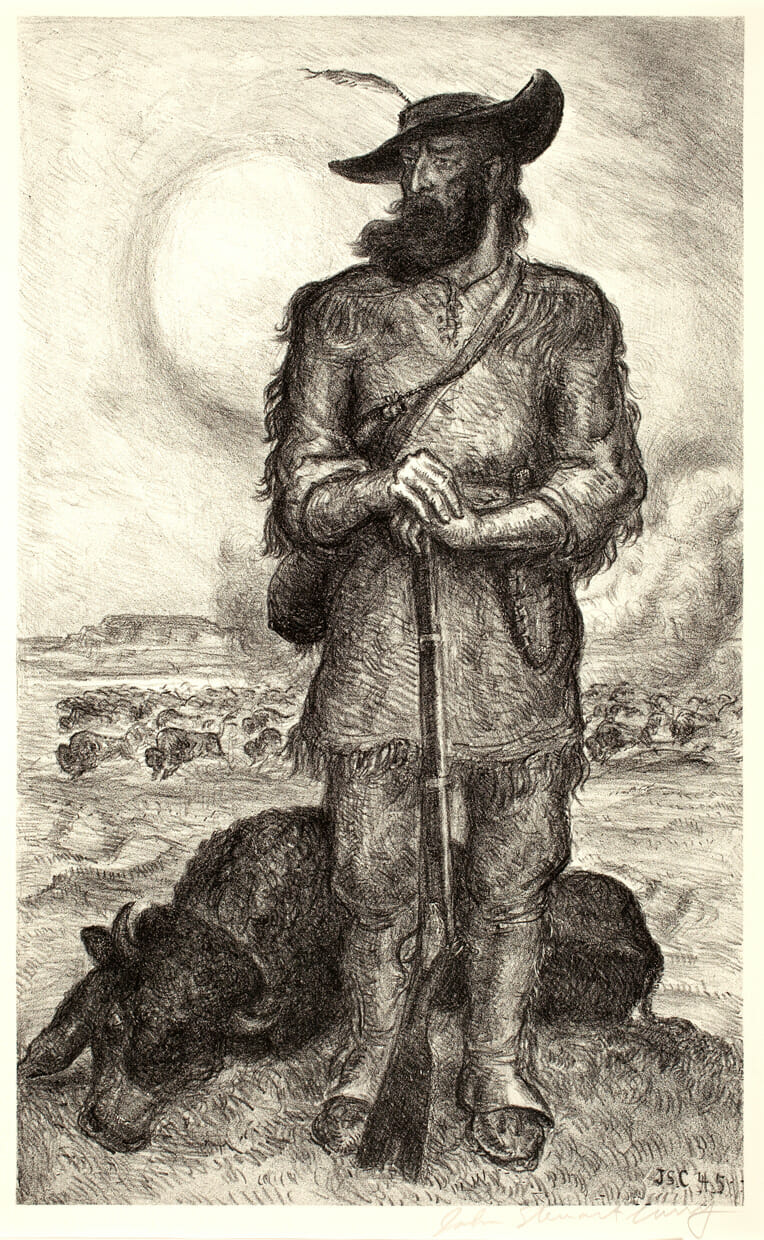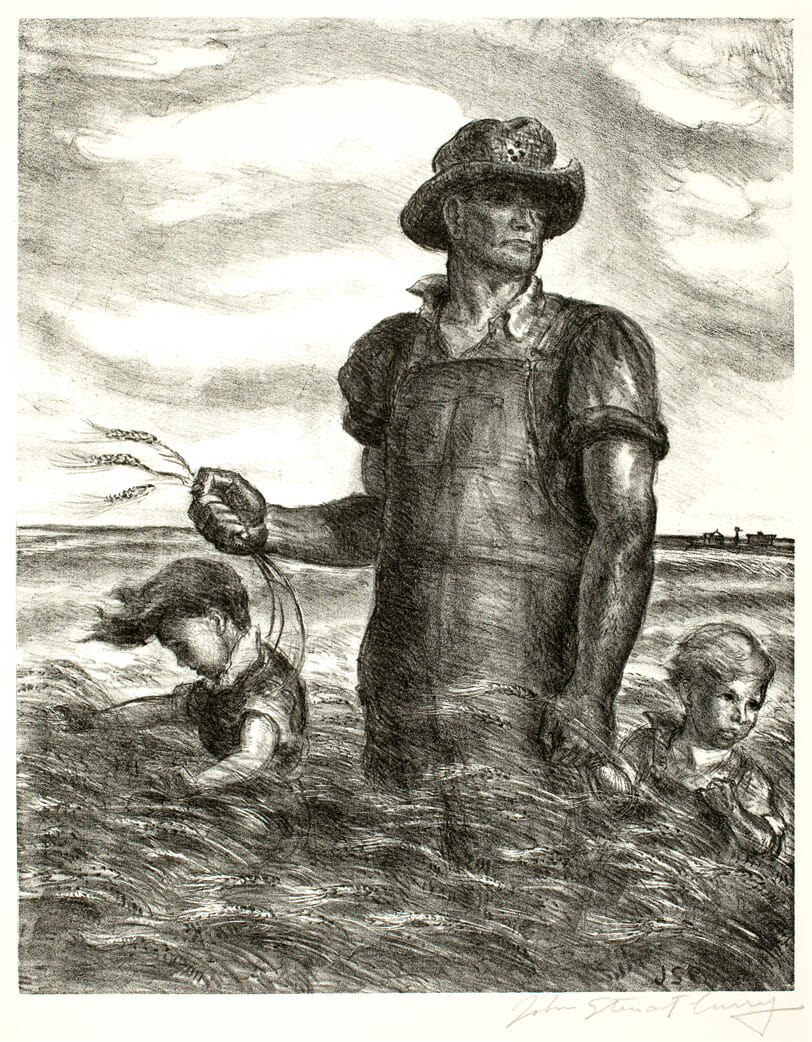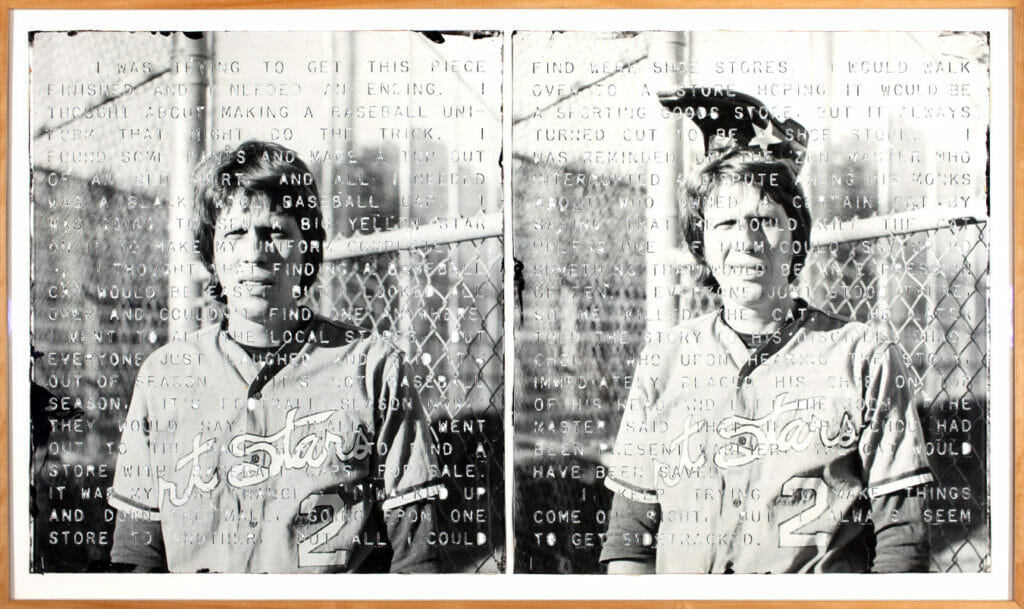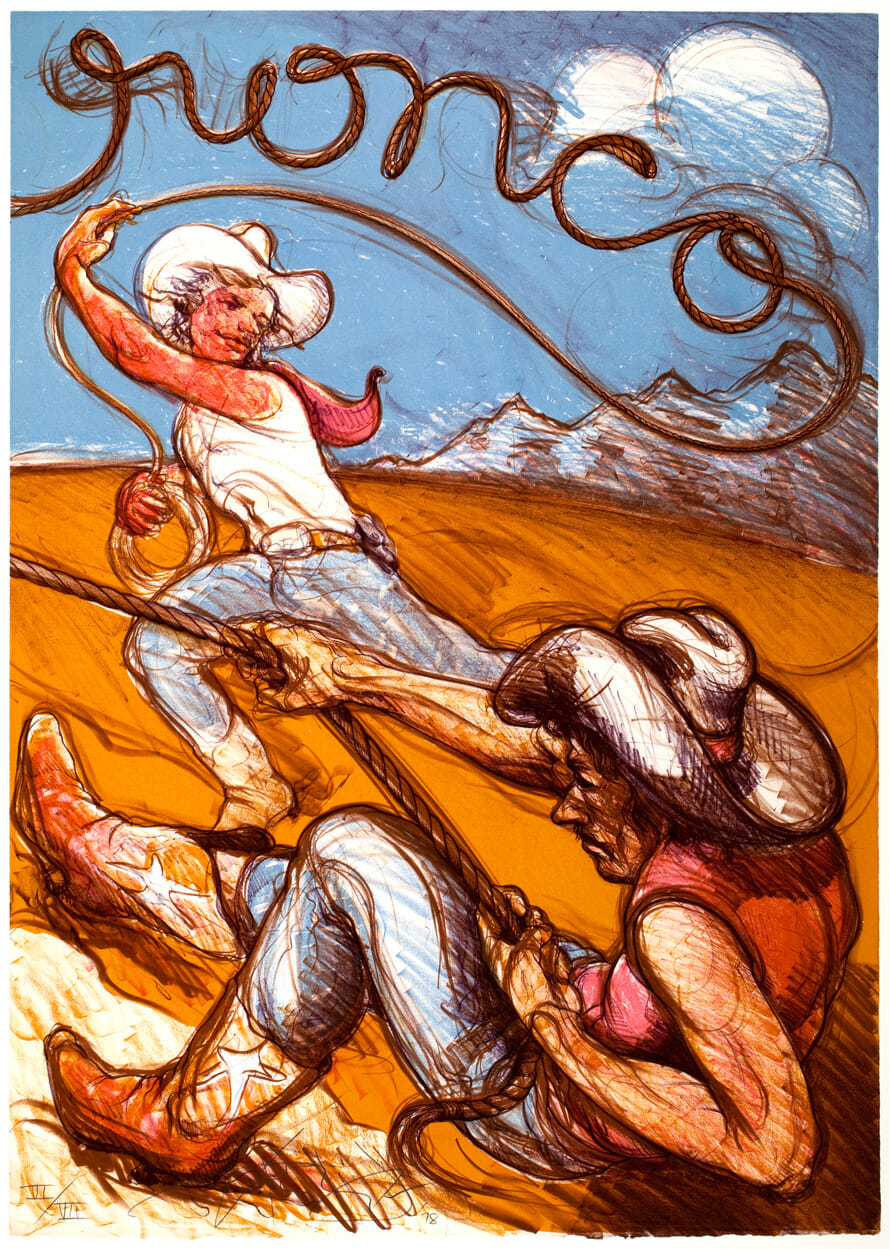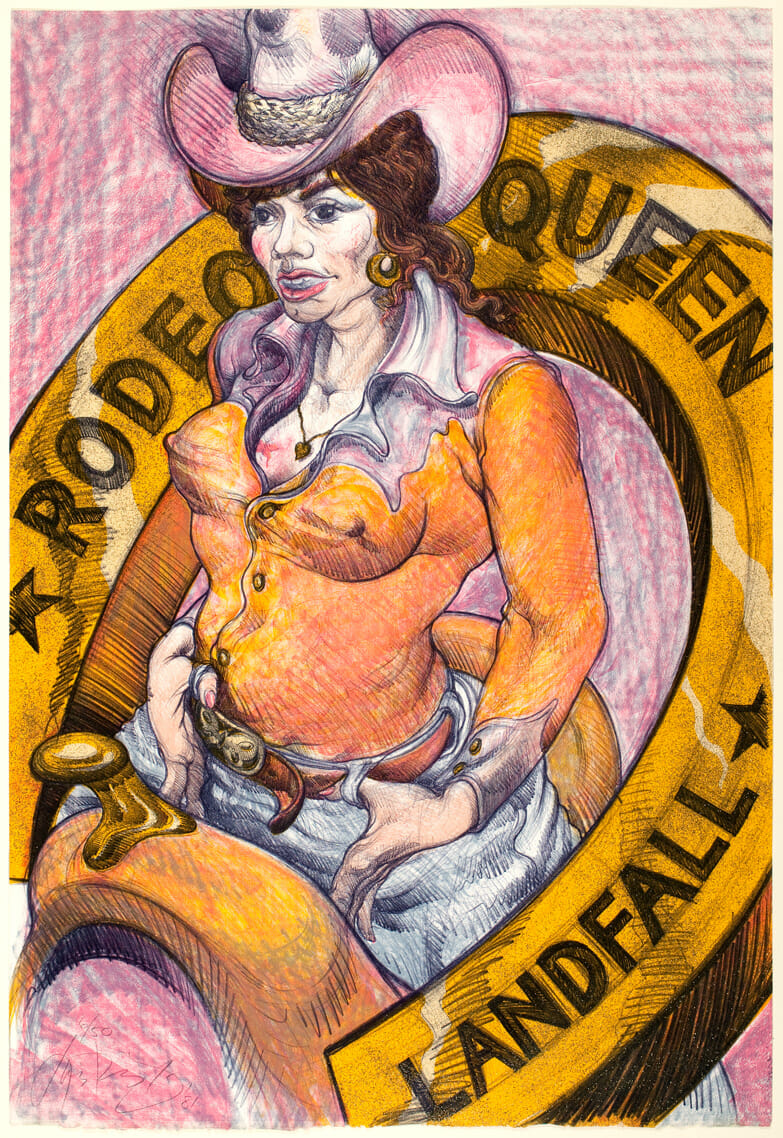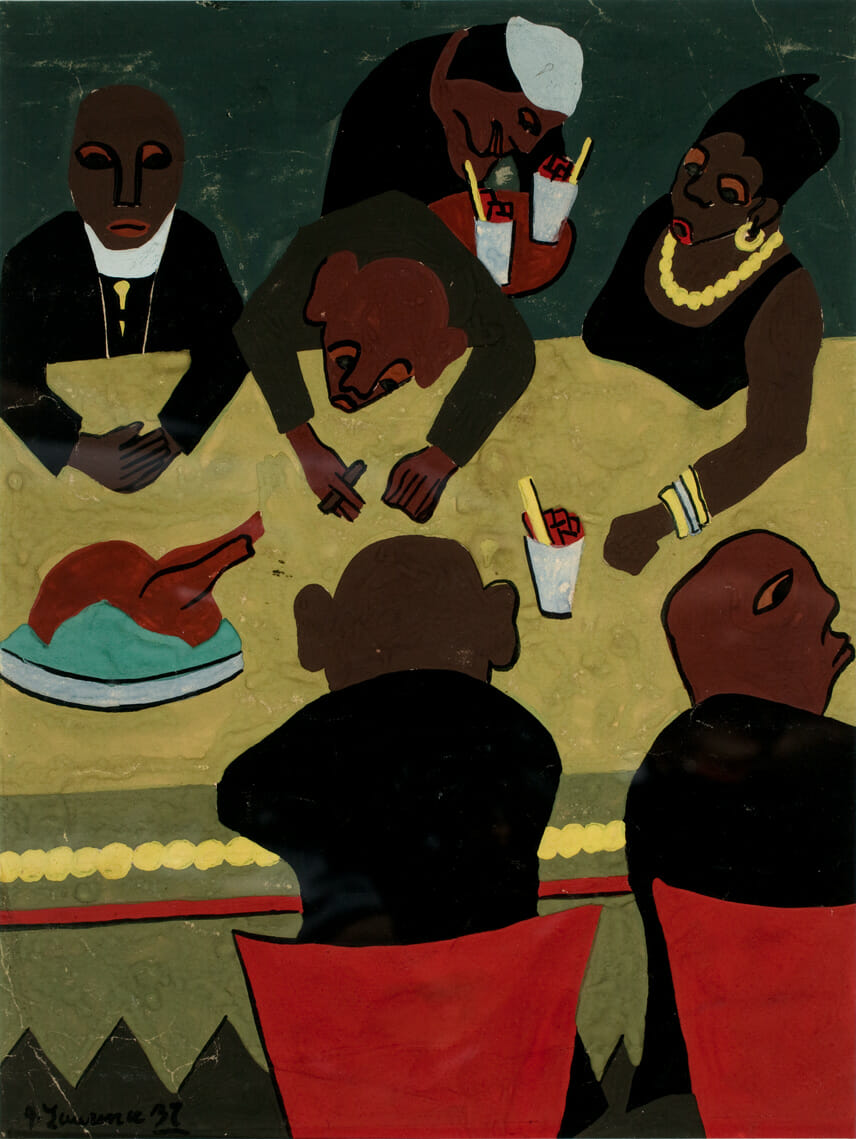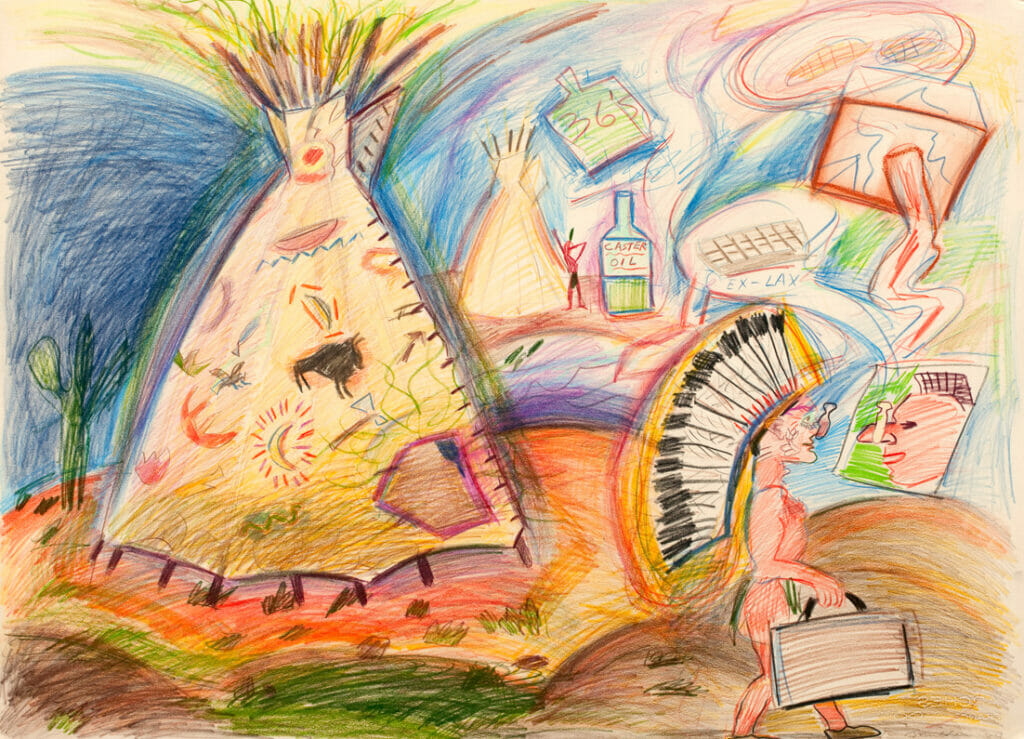Apple Pie: Symbols of Americana in MMoCA’s Permanent Collection
January 23, 2010 – April 11, 2010
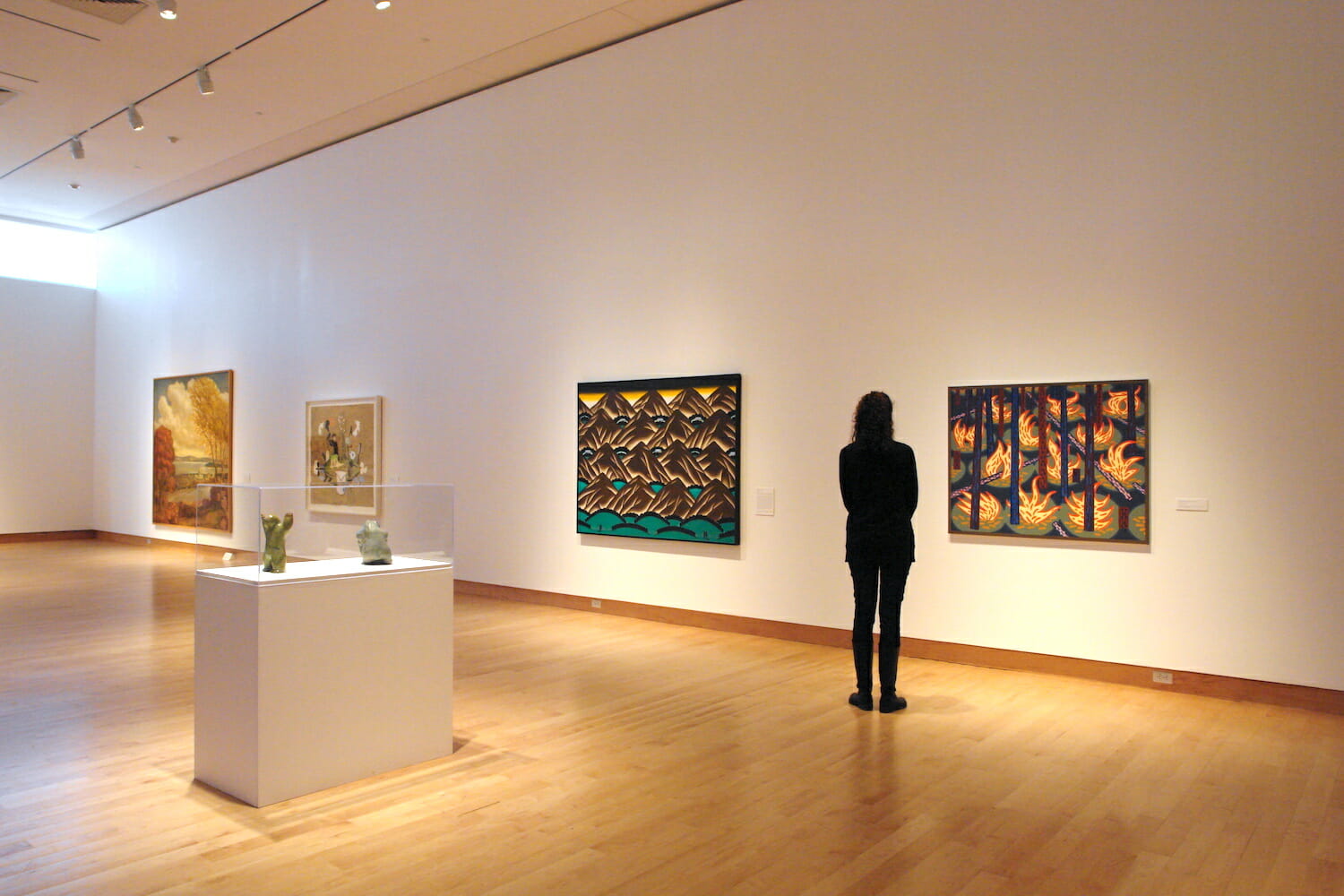

Overview
Since the first decades of European settlement, American identity has revolved around a handful of promises, among them: the awesome nature of the American landscape, the bounty of the American West, and the opportunity of the American city or settlement. Apple Pie: Symbols of Americana in MMoCA’s Permanent Collection features more than 80 paintings, photographs, prints, and objects that address American identity through imagery ranging from big cars and hamburger joints to cowboys and fields of corn. Works of art in the exhibition function as a fulcrum for exploring America’s archetypal symbols and for investigating the divide between the diverse experience of American life and the persistence of its core iconic images and themes.
Apple Pie begins with an examination of the American city. Featuring masterful works of art by Romare Bearden, Larry Clark, Jacob Laurence, Bob Thall, and James Van Der Zee, this section of the exhibition asks: What kinds of communities have existed—and continue to exist—in the American city? What promises have enticed individuals and families to move from the countryside to the city? What perils—and opportunities–engage the urban individual?
Romare Bearden’s Serenade (1969), for example, is fraught with the possibilities promised by the Harlem Renaissance of the 1920s and ‘30s. Bearden’s collage shows a man with his hand on the shoulder of his sweetheart. The guitar he holds in his other hand seems poised to produce a melodious tune. This vibrant collage reflects a hopeful moment in American history, a result of the great African-American migration from the rural South to urban centers of the northern states.
In sharp contrast, Apple Pie also includes rarely seen photographs from Larry Clark’s Tulsa series, which captures America’s drug scene of the 1960s and 1970s. Challenging and perverse, Clark’s images show the dark side of a largely urban underground culture.
Historians argue that the myth of the “boundless” American frontier has been an important factor in shaping the country’s identity. Several works in the exhibition relate to this romanticism. John Steuart Curry’s Madison Landscape (1941), for example, depicts an idyllic but inaccurate vision of Wisconsin’s capital city. Curry promoted the idea of an untamed and unpolluted landscape for American audiences in the mid-twentieth century. Thus, Madison Landscape imagines a bluff that provides a dramatic view of the beautiful State Capitol, but intentionally omits the industrial area to the east. Another Wisconsin artist, Charles Munch, imagines the wonder of a campsite fire in bold, colorful tones.
Similarly, works by Peter Saul and Luis Jiménez revel in stereotypes of the American West. Through their visual exploration of cowboys, cowgirls, and frontier icons, these artists raise important questions about history, landscape, sexuality, and gender roles. Jiménez’s Bronco, for example, shows a rearing stallion being lassoed by two wranglers. According to Jiménez, many people believe that “what [is] glamorous about the United States [is] cowboys and Indians…What they [see] as exciting [is] this kind of raw western quality, a sense of the frontier.”
Other works in the exhibition show present-day America: ironic, contradictory, sentimental, and diverse. Greta Pratt’s photograph titled Man Eating Turkey Leg, Disney World, Florida (1999), for example, shows a middle-aged man devouring a turkey leg while examining a mannequin of a Native American man. The statue is perfectly proportioned with a Roman nose and smooth skin. Slightly smaller than lifesize, this idealized figure contrasts sharply with the visceral quality of the real man and his meal.
Other contemporary works include photographs by John Shimon and Julie Lindemann, who work collaboratively from their studio in Manitowoc, Wisconsin. Over many years, Shimon and Lindemann have directed their camera lens to distinctive individuals in their home environments. In a photograph on view from 1986–87, Thecla Bertsche is shown in her tidy but outdated kitchen. She is everyone’s grandma, posing proudly for the camera.
Also featured in the exhibition are works by Don Baum, Thomas Hart Benton, Jim Dine, Robert Frank, Susan Rothenberg, Paul Shambroom, TL Solien, and Alec Soth, among other artists.
The United States is an enormous country. Its population of more than 300 million lives on nearly four million square miles and supports scores of languages and cultures. Despite this diversity, relatively few themes and icons have come to dominate American identity. Apple Pie focuses on the wavering line between those symbols and the endlessly complex reality of American life.
Exhibition Support
Generous support for Apple Pie: Symbols of Americana in MMoCA’s Permanent Collection has been provided by James and Sylvia Vaccaro; the Dane County Cultural Affairs Commission with additional funds from the Endres Mfg. Company Foundation and the Overture Foundation; a grant from the Wisconsin Arts Board, with funds from the State of Wisconsin and the National Endowment for the Arts; and the Art League of the Madison Museum of Contemporary Art.
Artwork

Coffee Shop, Railroad Station – Indianapolis, from The Americans
1956
Robert Frank

Black Hawk Unit Topography + Terrain
2000
Brad Kahlhamer

White Light Mystery in a White Light
2000
Brad Kahlhamer
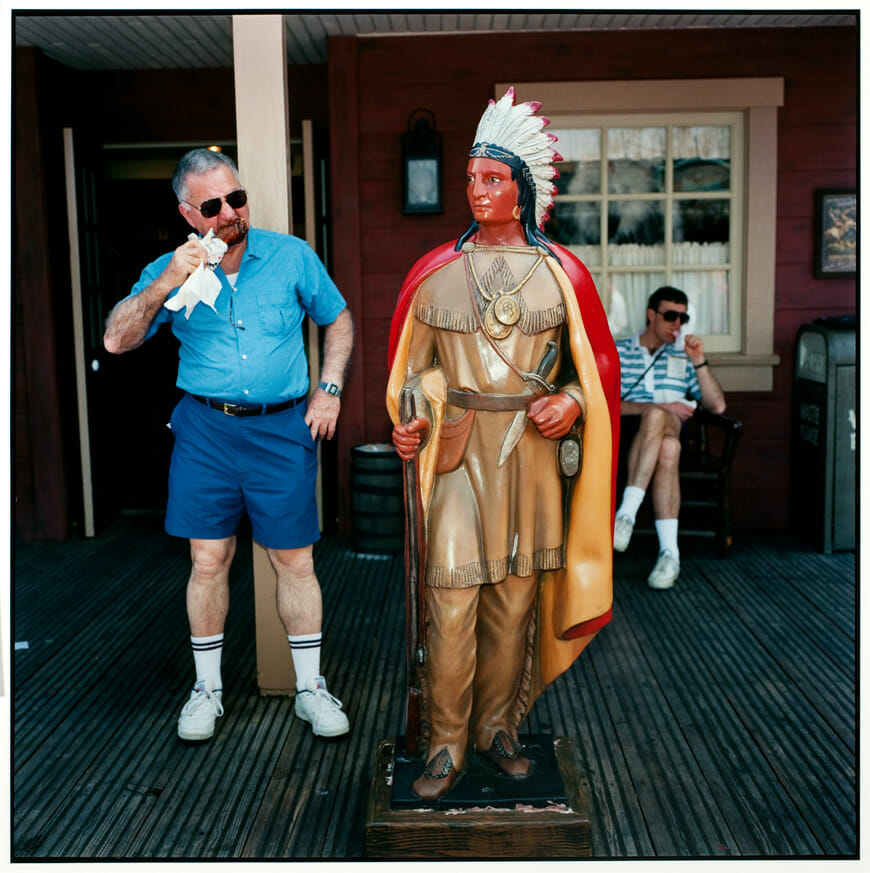
Man Eating Turkey Leg, Disney World, Florida
1999
Greta Pratt

Thecla Bertsche Keeps Busy and Has a Very Tidy House, St. Nazianz, Wisconsin
1986
J. Shimon and J. Lindemann














